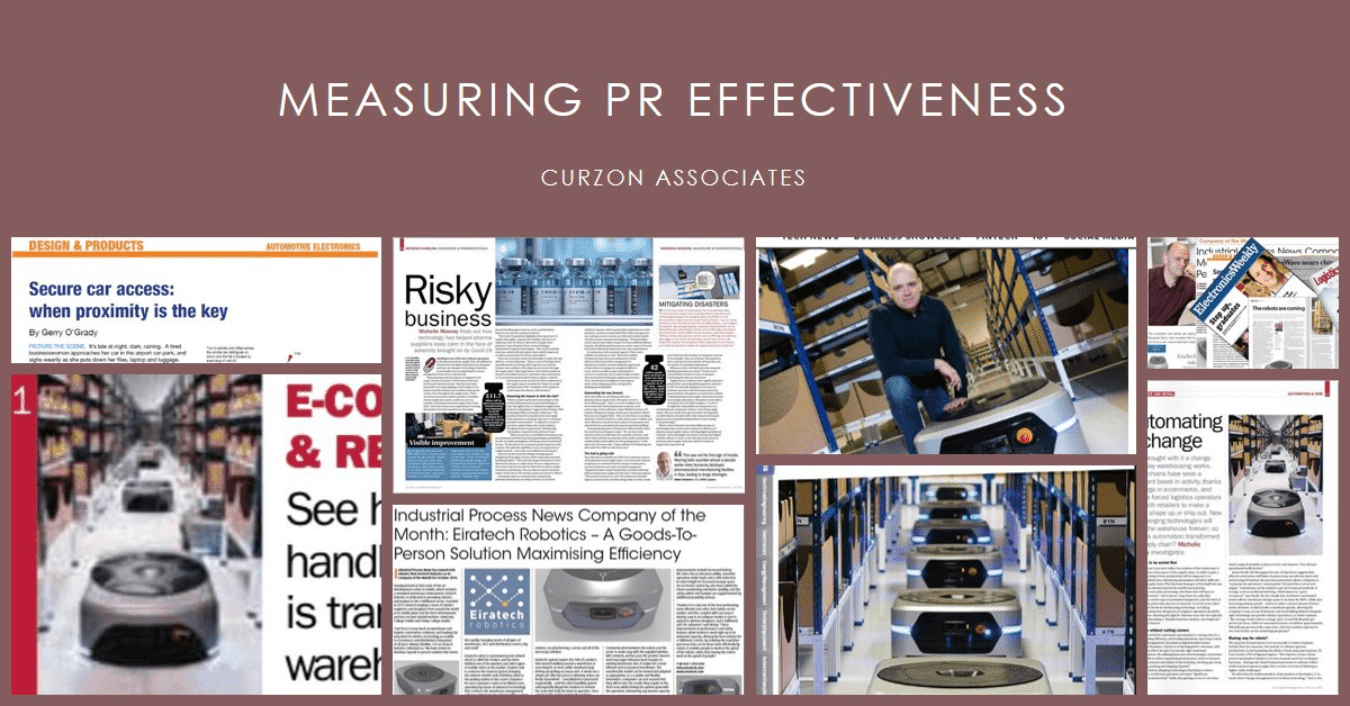6 Ways of Measuring PR Effectiveness
Measuring the effectiveness of PR and determining its impact on the company's bottom line is a fraught task, but there are ways to evaluate whether PR is leading to a positive ROI. By monitoring and analysing these metrics, you can determine whether PR is contributing to a positive ROI.
However, it's important to note that PR is just one aspect of a company's communication strategy, and its impact on ROI should be evaluated in conjunction with other marketing efforts.
Media Impressions: ‘Media impressions’ refers to the number of times your brand or message appears in the media. It is a commonly used metric to measure PR effectiveness, particularly when tracking the success of a press release or a media-centred event, like a product launch. This can be tracked using media monitoring tools and can help to determine the reach and impact of your PR efforts, but unless you are using a ‘spray and pray’ unfocussed media list, it should be possible to track media coverage via direct journalist engagement and response. This is particularly true with vertical media engagement, and of course these are the very writers and journalists that your market reads.
Investment & Talent: are you reaching your investment targets and are you attracting the right candidates for your key roles? The ‘buzz’ around any enterprise is key for both these objectives – it is often said that investors back people rather than products, so it is important for your company’s success to pitch yourself as an industry leader and opinion former, and PR is the ideal tool for this task. Successfully hitting the right note will attract investors and talent and attracting them is a key measure of the success of the PR surrounding your enterprise.
Share of Voice: Share of voice refers to the percentage of media coverage your brand receives compared to your competitors. This metric can help you understand your brand's visibility in the media and how it compares to your competition. Monitoring your competitions media activity and where it appears is a crucial PR activity for any tech/pharma.
Social Media Engagement: Social media platforms provide an excellent opportunity to measure PR effectiveness. Tracking likes, shares, comments, and other forms of engagement can provide insights into how your PR efforts are resonating with your audience.
Website Traffic: Monitoring website traffic can help you track the impact of PR on website traffic. This can be done using website analytics tools, which can help you understand the sources of traffic and how PR efforts are driving website visits.
Sales: last but definitely not least, the ultimate measure of all marketing efforts that is sales. Measuring the impact of PR on sales can be challenging – while it is a sales support tool, it is only one part of the marketing mix – but it’s contribution can be identified by tracking sales data over time and correlating it with PR and other your other integrated marketing activities, which should all be working in tandem, both on a ‘goal by goal’ basis, and also over the longer term. See PESO
PR is a key tool in pitching your enterprise for success and integrating your company’s vision and core values into your every message. If you want to explore how quickly it can be put together for your enterprise, feel free to email me here.
